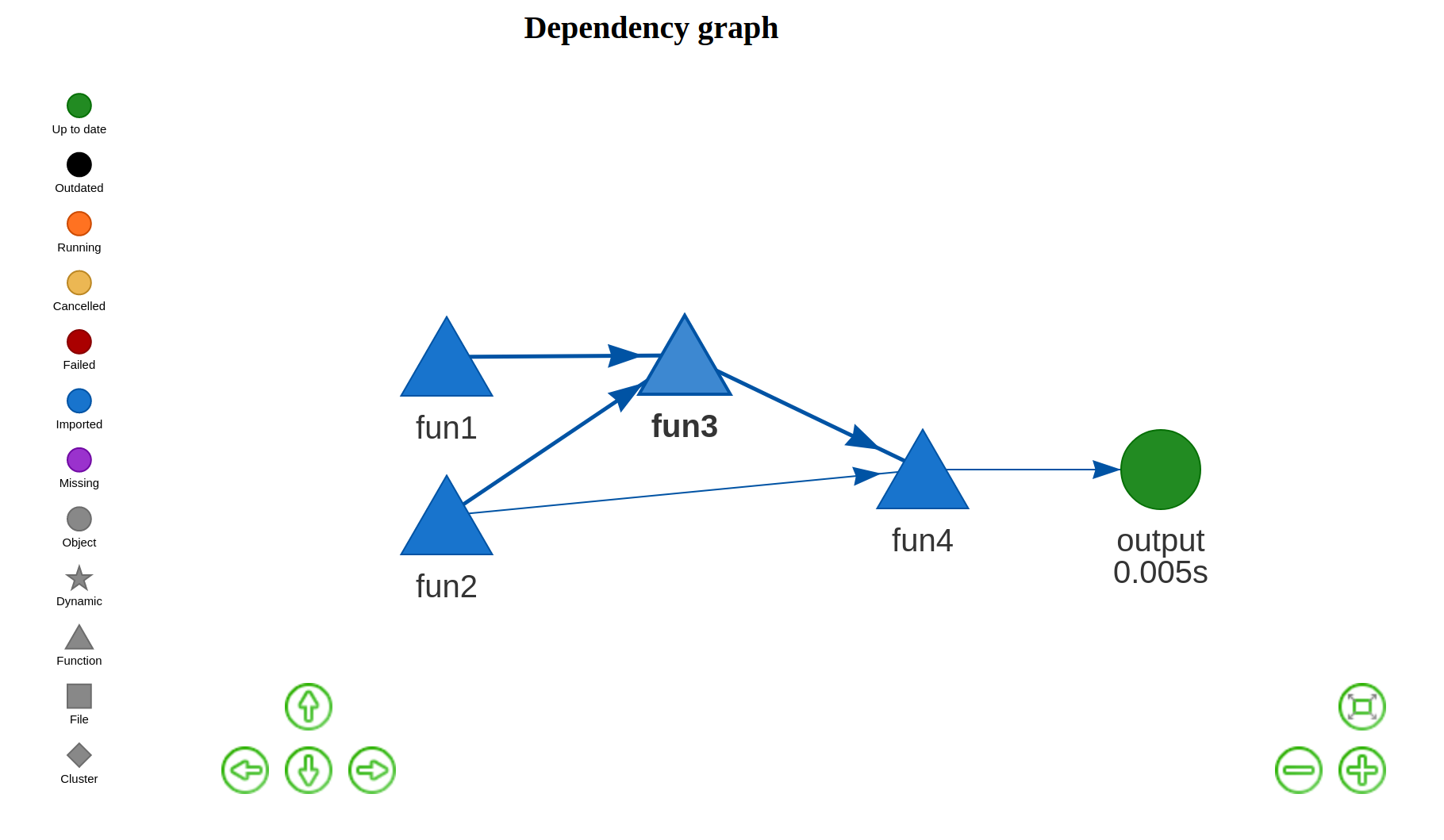There are various ways to organise your R workflow. If you are working with a big project, then Airflow might be for you. But for the majority of R project codes, drake package will fullfilled your need.
Here is the basic use of drake. The example here will be using a simple
collections of functions.
fun1 <- function(x = globalenv()$x){
x + 2
}
fun2 <- function(i = 3){
i * 10
}
fun3 <- function(){
x1 = fun1()
x2 = fun2(5)
x1 + x2
}
fun4 <- function(z = globalenv()$z){
x1 = 1 + z
x2 = fun2(2)
x3 = fun3()
x1 + x2 + x3
}
Install drake development version in Github here.
remotes::install_github("ropensci/drake")
library(drake)
x = 3
z = 5
plan <- drake_plan(
output = fun4()
)
make(plan)
Running make(plan) will give the overview what is in the plan, sort of like using Make.
▶ target x
▶ target z
▶ target output
Then you can make the interactive network to see all the workflow. This can be done several ways.
library("visNetwork")
vis_drake_graph(plan, full_legend = TRUE)
## need networkD3 package
library(networkD3)
sankey_drake_graph(plan)
library(ggraph)
drake_ggraph(plan)
## To show only target and dependency
plot(plan)
## read the build target
readd(output)
This how it looks like using vis_drake_graph. For interactive can be seen here.
